7 easy ways to make your iPhone more accessible

The Apple iOS includes a wide selection of tools designed to make your life easier, and to support users with hearing or vision loss or those with reduced mobility or dexterity. Our experts explain how to access them.
For some, improving accessibility might be as simple as making text larger and easier to read, or pairing your iPhone or iPad with a hearing aid. But iOS goes further, providing accessibility features that make touch controls easier to use – allowing you to perform essential actions with a single tap.
Here, we explain where to find the accessibility options that are included on your iOS device. We also run through what each one does and demonstrate how to use them.
Join Which? Tech Support Stay on top of your tech and get unlimited expert 1-2-1 support by phone, email, remote fix and in print.
1. Get spoken descriptions
In short Your iOS device can read out what’s on screen, and it offers other tools that give spoken prompts and descriptions.
Apple’s screen reader is called VoiceOver. To access it, tap Settings > Accessibility > VoiceOver. The tool is gesture-based, and you can tap the VoiceOver Practice button to learn how to use it.
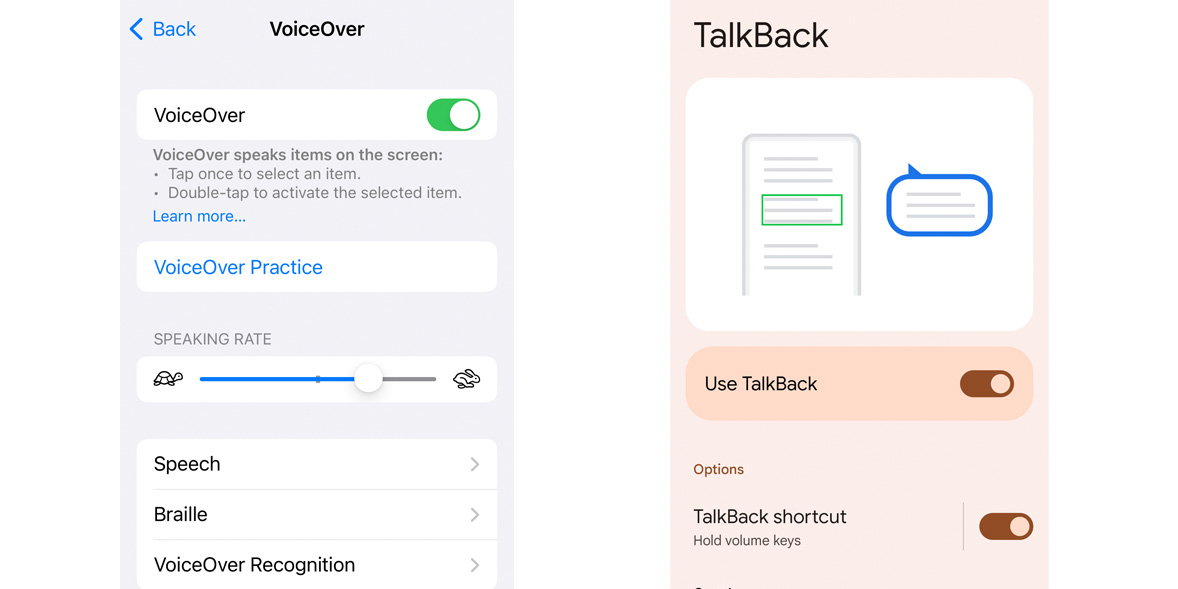
An on-screen slider lets you adjust the VoiceOver speaking rate. For example, tortoise is slower and hare is faster. You can also tap Speech to select a new voice.
VoiceOver supports braille displays and braille input, either via the touchscreen or by connecting a physical braille device. You can tap VoiceOver > Braille to configure this.
Go back to the main Accessibility settings screen and tap Spoken Content – enabling this will allow you to select text, then tap Speak selection to have the text read aloud. Again, you can customise the way this works using the options. Tap Audio Descriptions and you can get descriptions read out of scenes in videos that support them.
2. Make your screen easier to read
In short iOS lets you enlarge text, zoom into your screen and adjust colour settings.
Apple's magnification tool is known as Zoom. Tap it, then tap the toggle to enable it. Double-tapping with three fingers will zoom in or out, and dragging with three fingers will move around the screen.
There are some useful options to experiment with, including a slider that lets you set your preferred Maximum Zoom Level.
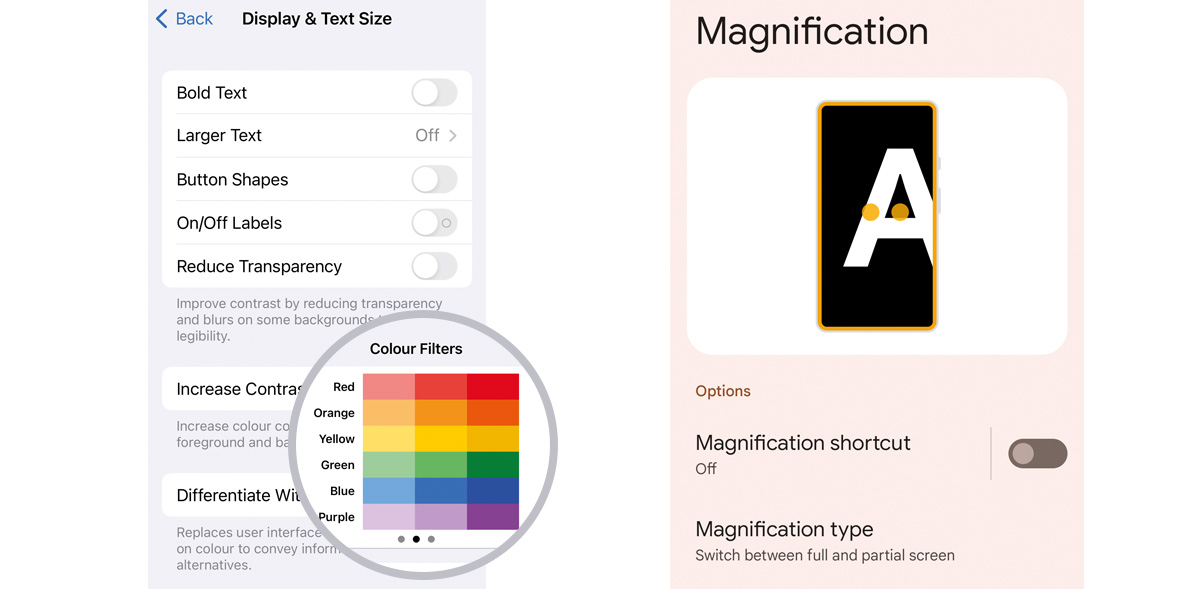
From Accessibility options, tap Display & Text Size for further ways to improve the visibility of on-screen items. If text is hard to see, tap Bold Text to make it stand out, or choose Larger Text and use the slider to increase the size.
Colour-blind users will find some useful options here, too – tap and enable Colour Filters, for instance, then select a filter that suits your needs.
Considering experimenting with the Motion setting if you are sensitive to motion effects. You’ll find options here to disable or reduce iOS’s movements and animations.
If you're looking for ways to improve your desktop experience, see how to make your PC easier to use.
3. Set up hearing devices
In short You can link your iPhone or iPad to a compatible hearing aid and adjust settings.
If your hearing aid is Bluetooth-compatible or Made for iPhone (MFI), you can connect it directly to your iPhone or iPad, but you’ll need to pair it first. The precise method for pairing will depend on the hearing device you’re using, so refer to your hearing aid’s instructions for more. In most cases, you’ll need to tap Settings > Bluetooth to begin the pairing process.
Once you’ve paired your hearing aid, you’ll spot it under Settings > Accessibility > Hearing Devices, where you can also check its battery and customise call settings, volume and more.
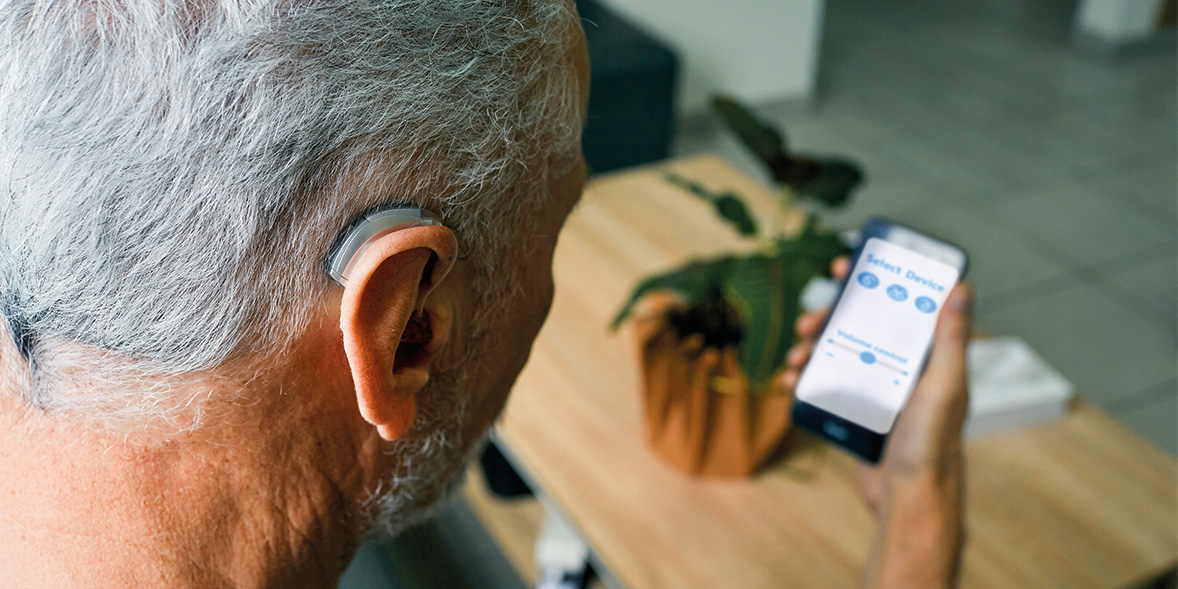
4. Get your phone to listen for sounds
In short Your device can check for sounds, such as alarms or doorbells.
On an iPhone or iPad, tap Settings > Accessibility > Sound Recognition, then tap the switch to enable this feature.
You can now tap Sounds and select the types of sounds you want your phone to listen out for and notify you about. Whenever it hears the sounds you specify, you’ll see an on-screen notification.
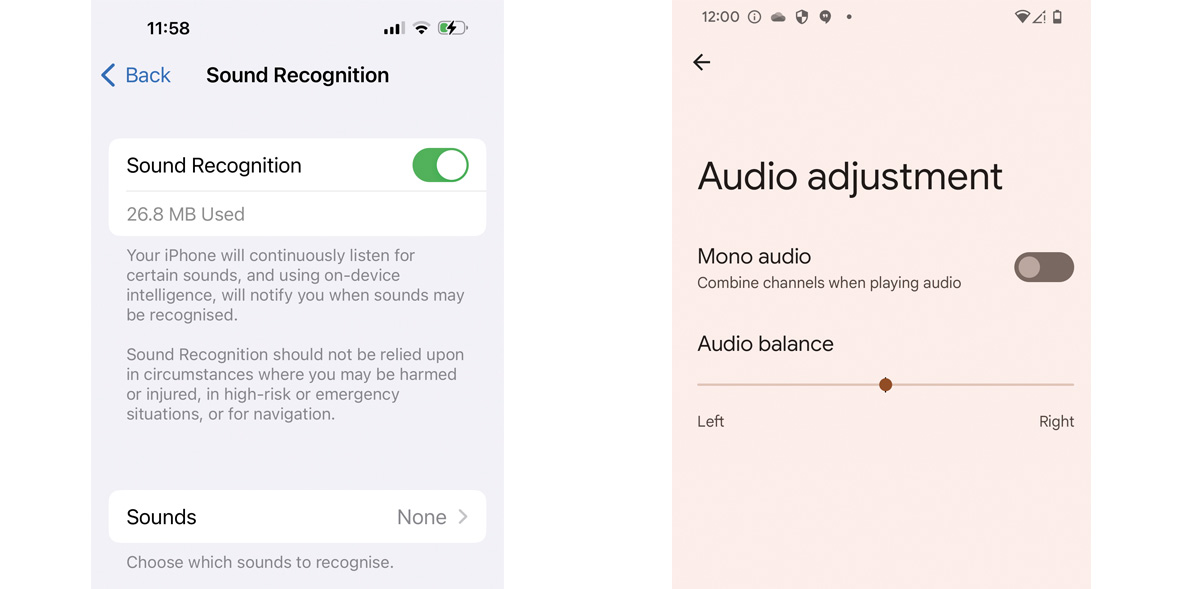
5. Use captions and subtitles
In short iOS can provide closed captions and subtitles, so you can follow along more easily with audio and video.
To enable captions and subtitles, tap Settings > Accessibility > Subtitles & Captioning, then select the toggle next to Closed Captions + SDH to turn it on. You can also select a Style for your captions. Apple is currently testing a Live Captions feature, but this isn’t available in the UK just yet.
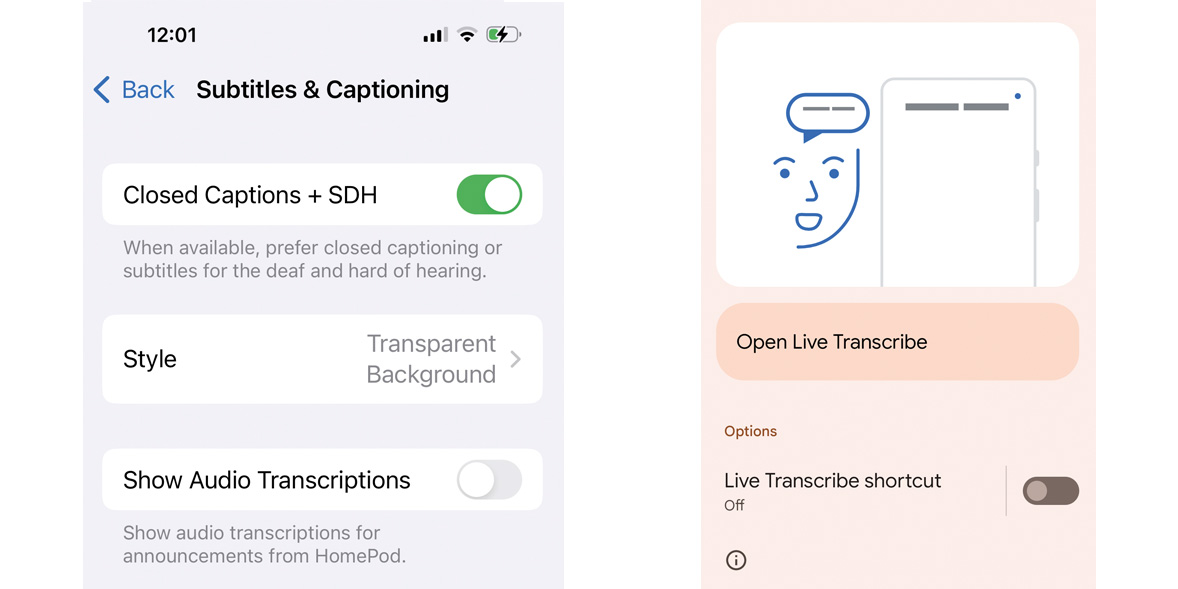
6. Fine-tune audio settings
In short You can configure the left and right audio channels to play the same content, or reduce background noise.
Tap Settings > Accessibility > Audio/Visual for other useful hearing-related settings on your iPhone or iPad. Here, for example, you can switch to mono audio, use the slider to change the left/right channel balance and enable an LED flash for alerts.
You'll also spot the Phone Noise Cancellation feature, which uses air pressure to reduce ambient background noise – this is meant to help you hear better in noisy environments.
7. Make your device easier to control
In short iOS offers alternative ways to interact with your device if you need assistance pressing buttons or using default touch controls.
Tap Settings > Accessibility > Touch > AssistiveTouch to enable a feature that lets you perform essential actions, such as going to the Home Screen, opening the Control Centre, adjusting volume and so on, from a menu that opens with a single tap.
You can choose which actions are shown by tapping Customise Top Level Menu, or refine the way AssistiveTouch works by using the options listed below. AssistiveTouch also works with adaptive accessories, such as joysticks and trackpads.
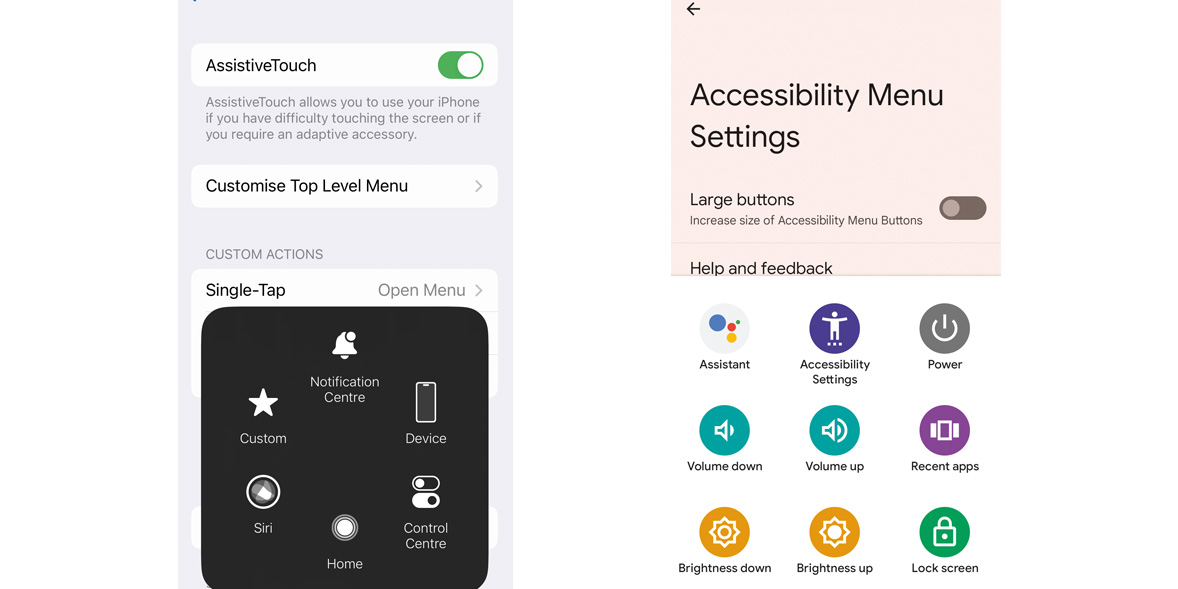
The Reachability tool could prove useful if you need to control your phone with one hand – this allows you to swipe down to bring the top half of the screen within easier reach.
Within Settings > Accessibility, Switch Control lets you set up your iPhone for use with adaptive switches. Alternatively, you can enable and configure Voice Control to navigate and operate your device via spoken commands.
Join Which? Tech Support
Which? Tech Support can help you keep you on top of your home tech. Our experts explain things clearly so that you can resolve issues and feel more confident using your devices.
Get unlimited 1-2-1 expert support:
- By phone Clear guidance in choosing, setting up, using and resolving issues with your home tech devices
- By email Outline the issue and we’ll email you our answer
- By remote fix We connect securely from our office to your home computer and resolve issues while you watch
- In print Which? Tech magazine, six issues a year delivered to your door.
You can join Which? Tech Support for £4.99 a month. You can cancel at any time.
Additional reporting by Tom Morgan.
Non-member: The iPhone 14 Pro Max score is revealed here.